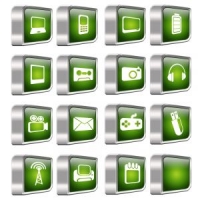Media Multitasking on the Rise as Doctors Plead for Its Demise

Multitasking skills were once something to be praised and still are in many workplace environments. Job applicants will promise their ability to juggle multiple projects at once, and it’s likely they’ll be expected to prove their ability if they’re hired.
After a long day at work, many people in the not too distant past would return home and veg out in front of the television, sit down with a book, or perhaps hit the gym to erase the stresses of the day.
These examples of tension relief are quickly becoming antiquated, and doctors around the world couldn’t be less thrilled about it.
We’re connected to mobile apps that track our progress at the gym, and the apps share our progress with various social media networks. We’re reading books on devices that also allow us to read our email on the same screen. We’re watching “smart” TVs where we’re encouraged to tweet, pin, and status update our opinions on everything we’re watching.
We’re multitasking to the point of no return, with our only break from the damaging practice when we’re asleep. And we haven’t been getting enough rest in decades.
Media multitasking is the new term for those who simultaneously use any combination of TV screens, smart phones, tablets, laptops, etc. While they may think that they’re accomplishing more by using a number of devices at once, recent studies show that what they’re really doing is losing the ability to focus on a single item or task at all.
Doctors warn that, as is the case with most new technology trends, one of the fastest growing groups of media multitaskers are children as young as ten years old. Parents used to simply work to remove their kids from the couch and away from the glow of the TV, but as Daily Health Central points out:
Since many of the devices used are portable, kids are often roaming throughout the house while they switch from one source of media to the other, the researchers added.
With mobile use steadily on the rise, TV manufacturers—with the development of their smart TVs—have brought their device back to the can’t-live-without-it mindset of many. Just as with smartphones, the TV sets of today and tomorrow are connected to Facebook, Twitter, Pandora, and a plethora of other interactive apps. Business Day recently reported, “nearly 85% of all flat-panel TVs produced in 2016 will be smart TVs.”
Buzzfeed picked out some of the more interesting facts in the book that prove not only are people tweeting in staggering numbers while sitting in front of the television, but that the type of programming—not the person doing the actual tweeting—is dictating when the most messages are being sent.
Do you find yourself media multitasking? Do you see the harm in doing so, or do the pros outweigh the cons? Let us know in the comments section below!

